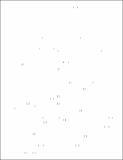Por favor, use este identificador para citar o enlazar a este item:
http://hdl.handle.net/10261/12534COMPARTIR / EXPORTAR:
 SHARE SHARE
 CORE
BASE CORE
BASE
|
|
| Visualizar otros formatos: MARC | Dublin Core | RDF | ORE | MODS | METS | DIDL | DATACITE | |

| Campo DC | Valor | Lengua/Idioma |
|---|---|---|
| dc.contributor.author | Barbero González, Jesús Fernando | - |
| dc.contributor.author | Mena Marugán, Guillermo A. | - |
| dc.contributor.author | Villaseñor, Eduardo J. S. | - |
| dc.date.accessioned | 2009-04-24T09:18:36Z | - |
| dc.date.available | 2009-04-24T09:18:36Z | - |
| dc.date.issued | 2004-08-20 | - |
| dc.identifier.citation | Physical Review D Vol. 70 (4), Id. 044028 (2004) | en_US |
| dc.identifier.issn | 0556-2821 | - |
| dc.identifier.uri | http://hdl.handle.net/10261/12534 | - |
| dc.description | 14 pags. ; appendix. | en_US |
| dc.description.abstract | We discuss the connection between the Fock space introduced by Ashtekar and Pierri for Einstein-Rosen waves and its perturbative counterpart based on the concept of a particle that arises in linearized gravity with a de Donder gauge. We show that the gauge adopted by Ashtekar and Pierri is indeed a generalization of the de Donder gauge to full (i.e., non-linearized) cylindrical gravity. This fact allows us to relate the two descriptions of the Einstein-Rosen waves analyzed here (the perturbative one and that made by Ashtekar and Pierri) by means of a simple field redefinition. Employing this redefinition, we find the highly non-linear relation that exists between the annihilation and creation-like variables of the two approaches. We next represent the particle-like variables of the perturbative approach as regularized operators, introducing a cutoff. These can be expanded in powers of the annihilation and creation operators of the Ashtekar-Pierri quantization, each additional power being multiplied by an extra square root of (ħ times) the three-dimensional gravitational constant, √G. In principle, the perturbative vacuum may be reached as the limit of a state annihilated by these regularized operators when the cutoff is removed. This state can be written as the vacuum of the Ashtekar-Pierri quantization corrected by a perturbative series in √G with no contributions from particles with energies above the cutoff. We show that the first-order correction is in fact a state of infinite norm. This result is interpreted as indicating that the Fock quantizations in the two approaches are unitarily inequivalent and, in any case, proves that the perturbative vacuum is not analytic in the interaction constant. Therefore a standard perturbative quantum analysis fails. | en_US |
| dc.description.sponsorship | This work was supported by the Spanish MCYT projects BFM2002-04031-C02 and BFM2001-0213. | en_US |
| dc.format.extent | 149891 bytes | - |
| dc.format.mimetype | application/pdf | - |
| dc.language.iso | eng | en_US |
| dc.publisher | American Physical Society | en_US |
| dc.rights | openAccess | en_US |
| dc.subject | [PACS] Canonical quantization | en_US |
| dc.subject | [PACS] Lower dimensional models; minisuperspace models | en_US |
| dc.subject | [PACS] Quantum field theory in curved spacetime | en_US |
| dc.subject | [PACS] General properties of perturbation theory | en_US |
| dc.title | Particles and vacuum for perturbative and nonperturbative Einstein-Rosen gravity | en_US |
| dc.type | artículo | en_US |
| dc.identifier.doi | 10.1103/PhysRevD.70.044028 | - |
| dc.description.peerreviewed | Peer reviewed | en_US |
| dc.relation.publisherversion | http://dx.doi.org/10.1103/PhysRevD.70.044028 | en_US |
| dc.type.coar | http://purl.org/coar/resource_type/c_6501 | es_ES |
| item.grantfulltext | open | - |
| item.cerifentitytype | Publications | - |
| item.openairecristype | http://purl.org/coar/resource_type/c_18cf | - |
| item.languageiso639-1 | en | - |
| item.fulltext | With Fulltext | - |
| item.openairetype | artículo | - |
| Aparece en las colecciones: | (CFMAC-IEM) Artículos | |
Ficheros en este ítem:
| Fichero | Descripción | Tamaño | Formato | |
|---|---|---|---|---|
| Barbero I.pdf | 146,38 kB | Adobe PDF |  Visualizar/Abrir |
CORE Recommender
SCOPUSTM
Citations
4
checked on 11-abr-2024
WEB OF SCIENCETM
Citations
3
checked on 18-feb-2024
Page view(s)
332
checked on 16-abr-2024
Download(s)
258
checked on 16-abr-2024
Google ScholarTM
Check
Altmetric
Altmetric
NOTA: Los ítems de Digital.CSIC están protegidos por copyright, con todos los derechos reservados, a menos que se indique lo contrario.
